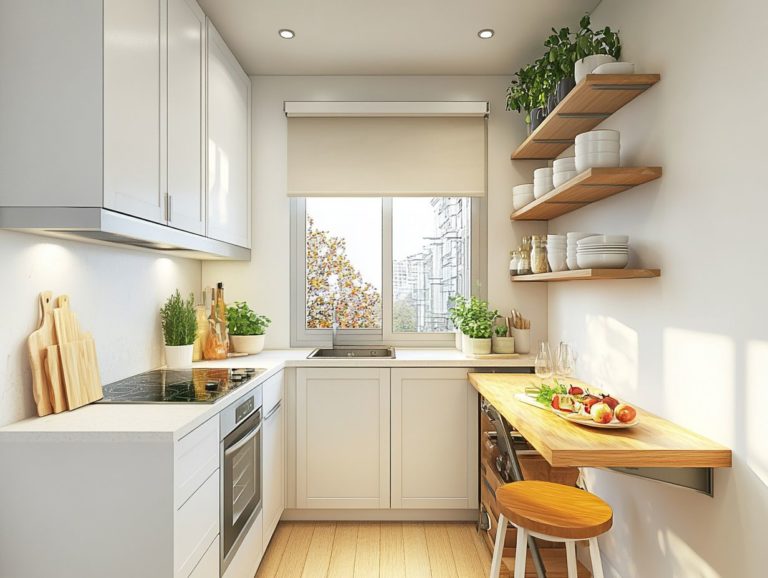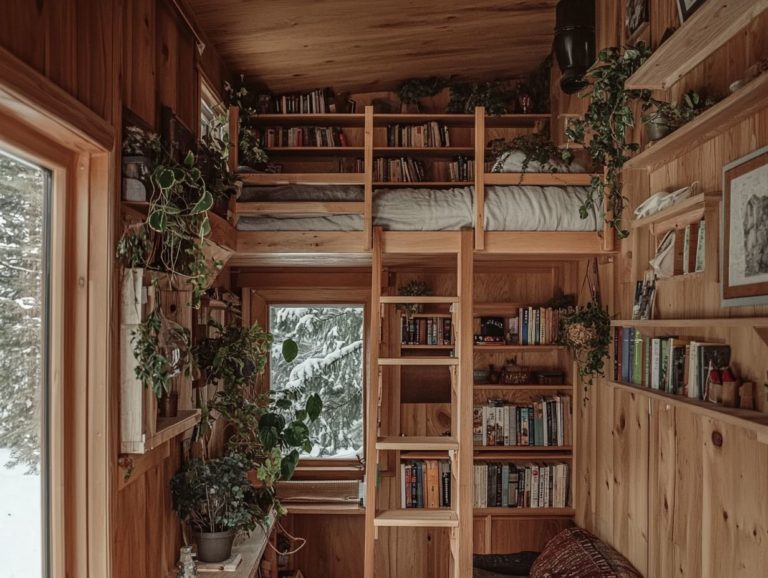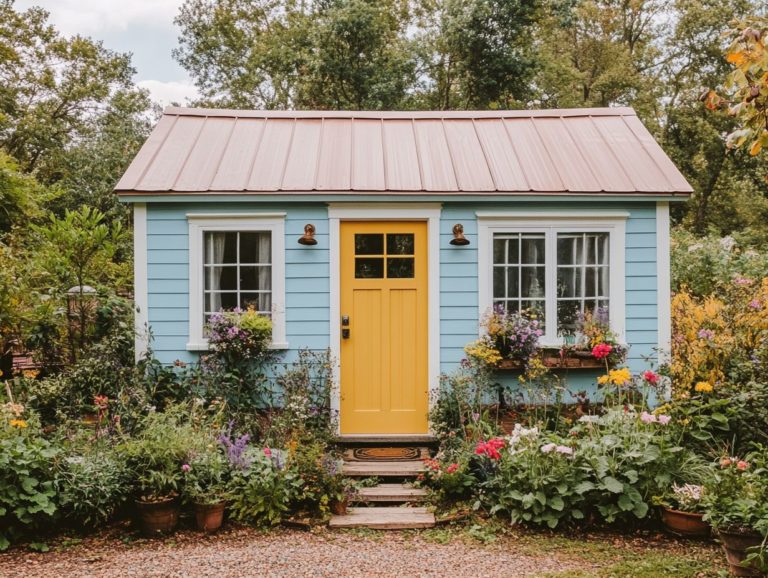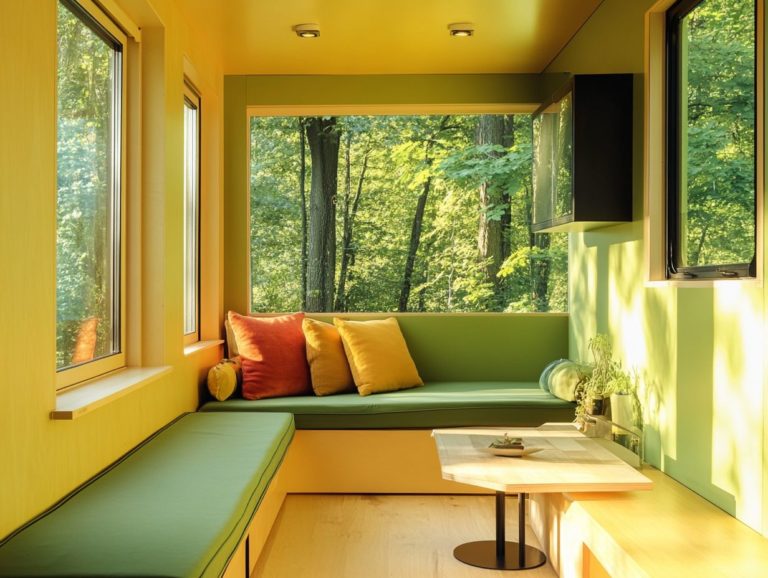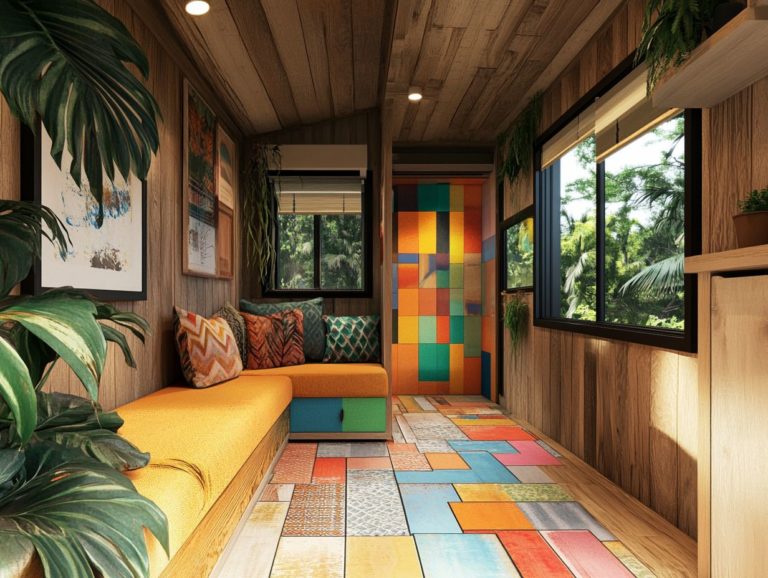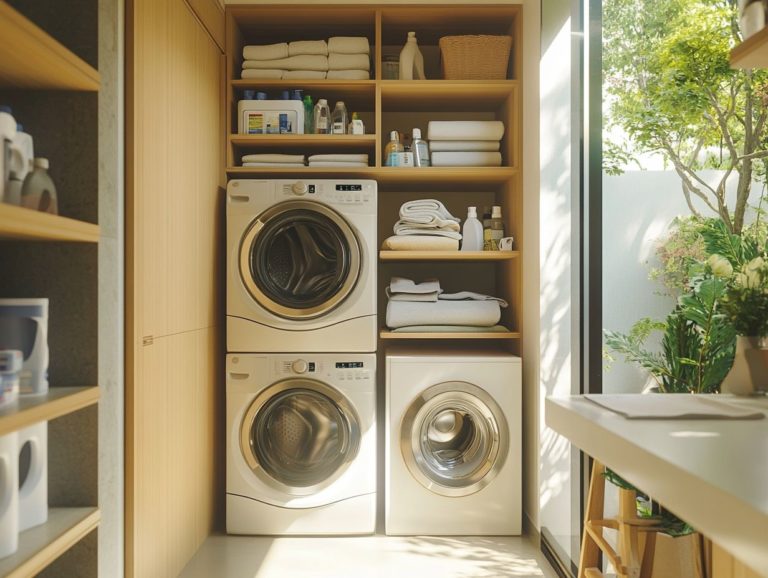Smart Design Solutions for Tiny House Living
Tiny houses represent more than just a fleeting trend; they signify a transformative lifestyle shift toward simplicity, sustainability, and creativity.
In this article, you will delve into the rich and multifaceted world of tiny house living. You’ll uncover the myriad benefits it offers from financial savings to enhanced environmental awareness.
You’ll discover smart design solutions that optimize space and functionality, innovative storage concepts, and the pivotal role of multi-functional furniture.
You ll also learn how to use natural light and integrate smart technology to elevate your tiny home experience, along with expert tips for crafting inviting outdoor spaces.
Get ready to discover how living small can lead to a rich, fulfilling life!
Contents
Key Takeaways:
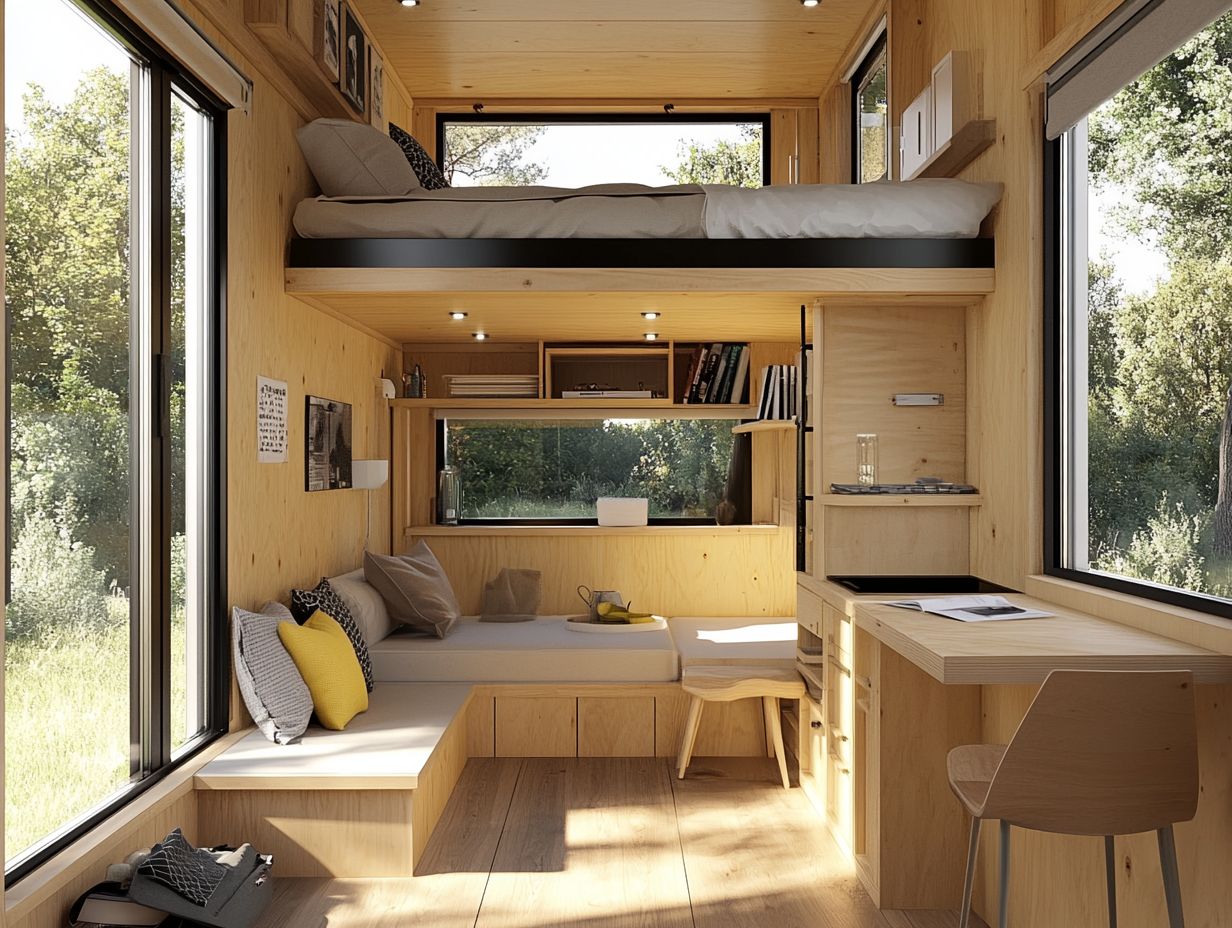
- Living in a tiny house can bring financial and environmental benefits, making it a smart choice for those seeking a simpler and more sustainable lifestyle.
- Maximizing space and functionality is crucial in designing for small spaces, with clever storage solutions and multi-functional furniture key to making the most of every inch.
- The strategic use of natural light and smart technology can create a more efficient and comfortable living space in a tiny house, while utilizing outdoor areas for living and storage can further enhance the overall design.
What is a Tiny House?
A tiny house is more than just a compact dwelling; it represents the principles of minimalist living and often measures less than 400 square feet. This small house reflects a growing movement that values efficient use of space and eco-friendly design, minimizing environmental impact.
Tiny homes are about creating small, comfortable environments that elevate your quality of life while encouraging you to let go of excess material possessions. Exploring the benefits of custom tiny house designs can enhance your living experience even further.
Originally gaining traction in the early 2000s, this movement invites you to reconsider conventional ideas of homeownership. It encourages embracing a simpler lifestyle. The design philosophy behind these quaint spaces frequently incorporates eco-friendly materials and innovative layouts, including space-saving ideas for tiny house kitchens, resulting in environments that are both functional and visually appealing.
By championing sustainable living, you can significantly reduce your carbon footprint (the total amount of greenhouse gases produced by your activities) while cultivating a deeper connection with nature. The minimalist aspect encourages you to declutter your life, fostering a sense of freedom and shifting your focus to experiences over possessions. This further underscores the charm and practicality of tiny living.
Benefits of Tiny House Living
Living in a tiny house offers a wealth of advantages, from financial savings to a reduced environmental impact. This lifestyle promotes simplicity, perfectly embodying the principles of the tiny house movement.
Embracing this approach allows you to shift toward a minimalist way of life, where experiences take precedence over material possessions while championing sustainable living that effectively minimizes your carbon footprint.
Financial and Environmental Advantages
One of the standout advantages of tiny homes is the remarkable financial benefits they offer, such as lower mortgage payments, reduced utility costs, and minimized maintenance expenses. The environmental perks are equally impressive, as these compact dwellings frequently utilize eco-friendly materials and sustainable living practices to curtail waste and resource consumption.
You’ll not only save on monthly expenditures but also have the potential to generate rental income, making tiny homes an alluring investment choice. By consuming less energy, these homes typically lead to significantly lower utility bills and a smaller carbon footprint. Many homeowners choose solar panels and energy-efficient appliances to further diminish their reliance on traditional power sources. Understanding the importance of scale in tiny house design can enhance these benefits even more.
The use of reclaimed or sustainably-sourced materials in constructing tiny homes supports eco-conscious industries and creates a distinctive aesthetic that attracts many buyers. Embracing a tiny home lifestyle ultimately cultivates both economic and environmental resilience, making it a truly rewarding choice.
Ready to make the leap into tiny living? Explore your options today!
Designing for Small Spaces
Designing for small spaces calls for innovative solutions that prioritize efficiency without sacrificing comfort or functionality. In the world of compact living, architects and designers utilize space-saving strategies that embody the essence of minimalist living.
These approaches create environments that feel more expansive and inviting than their actual dimensions suggest.
Maximizing Space and Functionality
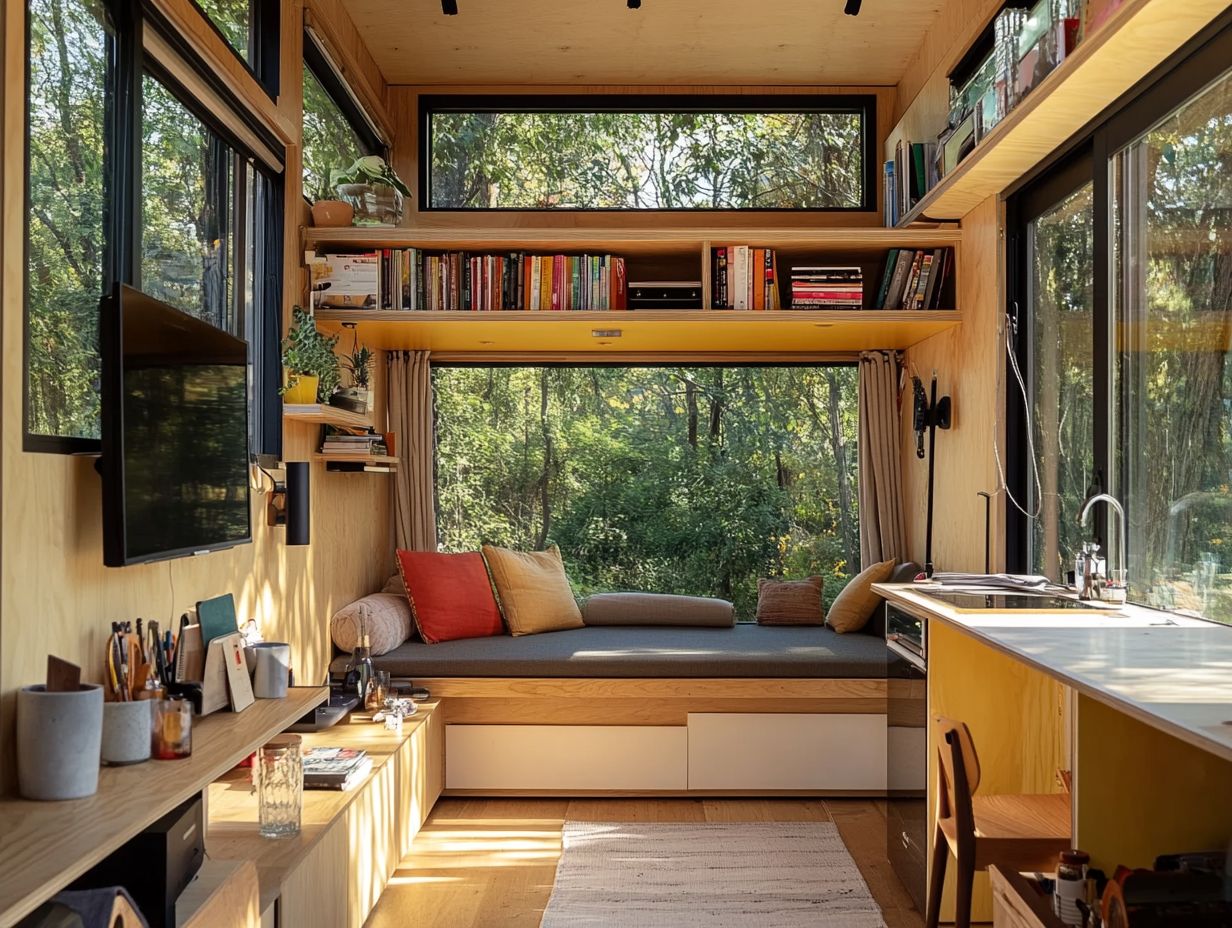
Maximizing space and functionality in your tiny home often means embracing furniture that serves multiple purposes. This strategy enhances the livability of your cozy micro living environment while promoting a minimalist lifestyle that values simplicity.
In these compact areas, clever layouts help you optimize every square foot. For example, consider convertible sofas that transform into beds, offering a comfortable seating option by day and a cozy sleeping nook by night. This shows how easily multifunctional furniture fits into your everyday routine.
Wall-mounted desks that fold away when not in use preserve open floor space while providing a designated area for work.
These exciting solutions not only contribute to a clean, uncluttered aesthetic but also ensure that every item serves a purpose, reflecting a mindful approach to tiny home living.
Innovative Storage Solutions
Innovative storage solutions are essential in tiny homes, where every square foot counts, and efficient space utilization is paramount.
By incorporating smart storage ideas like built-in shelving, under-bed compartments, and multifunctional furniture, you can create a cozy living environment while expertly maximizing every inch of available space. Additionally, considering sustainable design practices for tiny houses can enhance both functionality and environmental impact.
Clever Ways to Store and Organize
Clever ways to store and organize in your tiny home involve embracing smart storage solutions that blend functionality with aesthetics. This ensures your compact spaces remain tidy and inviting. Think collapsible furniture and hidden compartments these innovative strategies let you maximize your living area without sacrificing style!
For example, wall-mounted shelves can double as book storage and decorative displays, while under-bed drawers expand your available space for seasonal clothing or extra linens. Utilizing vertical space with hooks for bicycles or reusable bags not only keeps your floors clear but also adds an artistic flair to your environment. These are just a few principles of tiny home living: embracing minimalism that can help maximize your space.
Multi-purpose ottomans serve as hidden storage for miscellaneous items, making them an excellent choice for small living rooms. For those exploring tiny house living and adapting to limited space, modular furniture pieces that can be rearranged as needed provide flexibility, allowing you to adapt your space effortlessly for various activities and gatherings.
Multi-Functional Furniture
Furniture that serves multiple purposes is essential for tiny homes, enabling you to maximize space while introducing versatility into your cozy living environment.
Think expandable tables and sofas that seamlessly transform into beds these innovative pieces elevate functionality without sacrificing comfort or style. Embracing such designs allows you to create a harmonious space that truly reflects your lifestyle.
Transforming and Adaptable Pieces
Transforming and adaptable pieces of furniture are crucial for maximizing every inch of space in your tiny home. They offer options tailored to your dynamic lifestyle. These flexible designs enable you to make quick changes in functionality, effortlessly turning a dining area into a workspace or a living room into a cozy guest bedroom.
Take, for instance, the ingenious Murphy bed that folds neatly into the wall, freeing up precious floor space during the day and providing a restful sleeping area at night. Similarly, extendable tables can shift in size based on your guest list, transforming from a compact surface for an intimate dinner to a spacious table perfect for hosting family meals or gatherings.
This kind of adaptability not only elevates the utility of small spaces but also encourages a more organized and clutter-free environment, ensuring you can live comfortably within your limited square footage by utilizing top tiny house interior design hacks.
Maximizing Natural Light
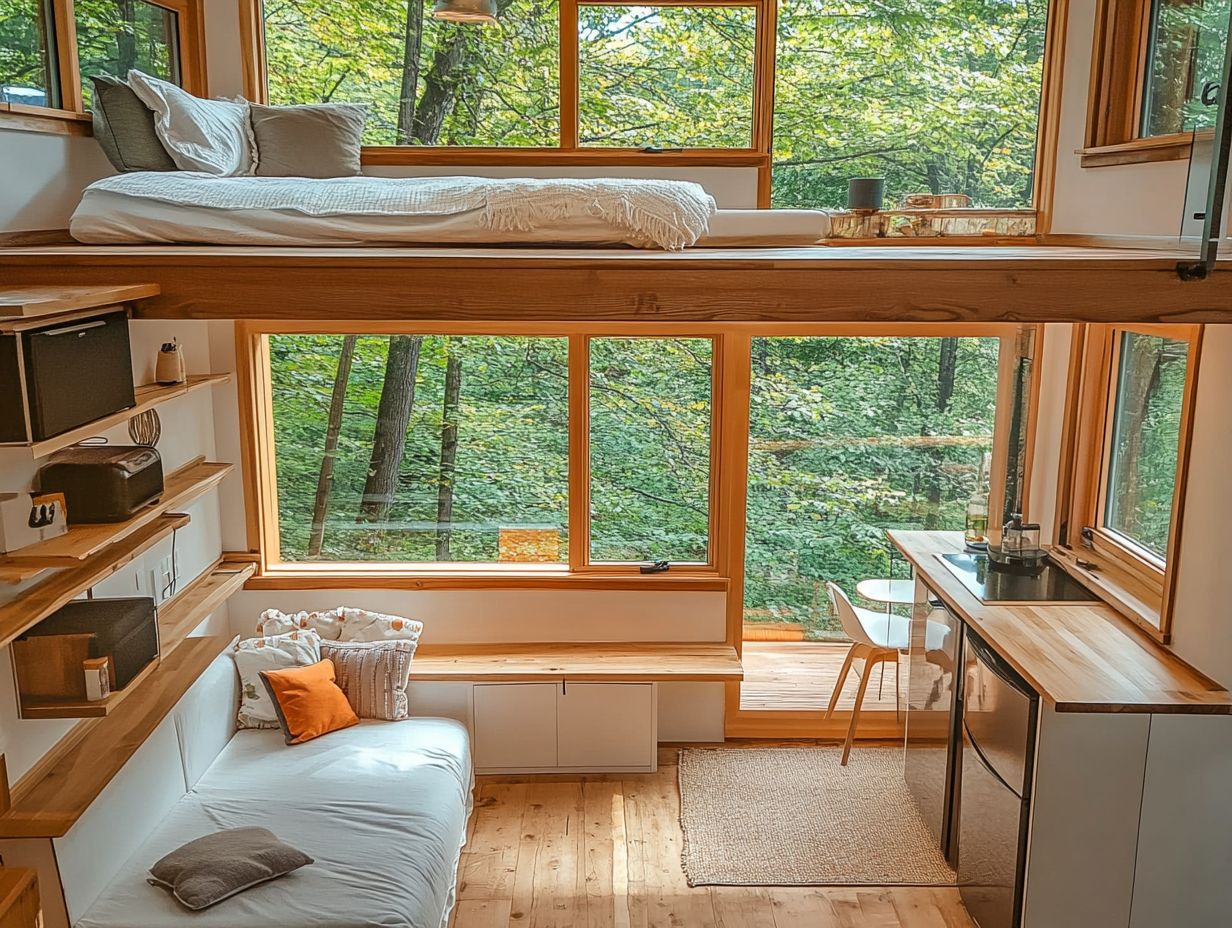
Maximizing natural light in your tiny home is essential for crafting an open and airy atmosphere that elevates your living experience. By strategically incorporating windows, skylights, and reflective surfaces, your modern tiny house can exude a sense of spaciousness and warmth.
This thoughtful approach not only enhances the overall aesthetic but also fosters a comforting environment within your cozy micro living space, especially when incorporating tiny house design elements for comfort and function.
Strategic Use of Windows and Skylights
The strategic use of windows and skylights is essential for enhancing natural light in your tiny home, transforming it into a bright and inviting haven. By carefully positioning openings for light, you can create an environment that feels larger and more connected to the outdoors.
Incorporating various types of window placements, such as floor-to-ceiling panes or cleverly positioned casement windows, can significantly boost ventilation and warmth.
Skylights, in particular, offer an exceptional source of illumination from above while reducing your reliance on artificial lighting. With the right orientation, these installations improve energy efficiency by harnessing solar gain and elevate the overall ambiance, contributing to a peaceful and serene atmosphere.
These design choices can transform your compact living area into a harmonious retreat, effortlessly blending comfort with sustainability.
Smart Technology for Tiny Homes
Smart technology is revolutionizing the tiny home experience, offering you efficient and automated systems that elevate your comfort while minimizing resource consumption. Don t miss out on this transformation! Enjoy the best of both worlds now!
Efficient and Automated Systems
Efficient and automated systems in tiny homes harness smart home technology to enhance your daily living experience while streamlining everyday tasks. With features like smart thermostats and automated lighting, these systems are carefully designed to maximize your comfort and minimize energy consumption.
Consider smart irrigation systems that adapt watering schedules based on weather conditions, ensuring that you make the most of your water usage. Automated blinds can be programmed to open and close with the rhythm of the day, naturally regulating your indoor temperatures.
Security features such as smart locks and cameras provide you with peace of mind, allowing you to keep an eye on your home from anywhere. These elements not only support a sustainable lifestyle but also enhance your sense of control and convenience in daily routines.
Creating Outdoor Living Spaces
Creating outdoor living spaces is essential to your tiny home design, highlighting the importance of integrating the outdoors to expand your home’s usable area.
Thoughtfully designed outdoor spaces elevate your overall living experience, enabling you to savor nature while making the most of every inch of space.
Utilizing Outdoor Space for Living and Storage
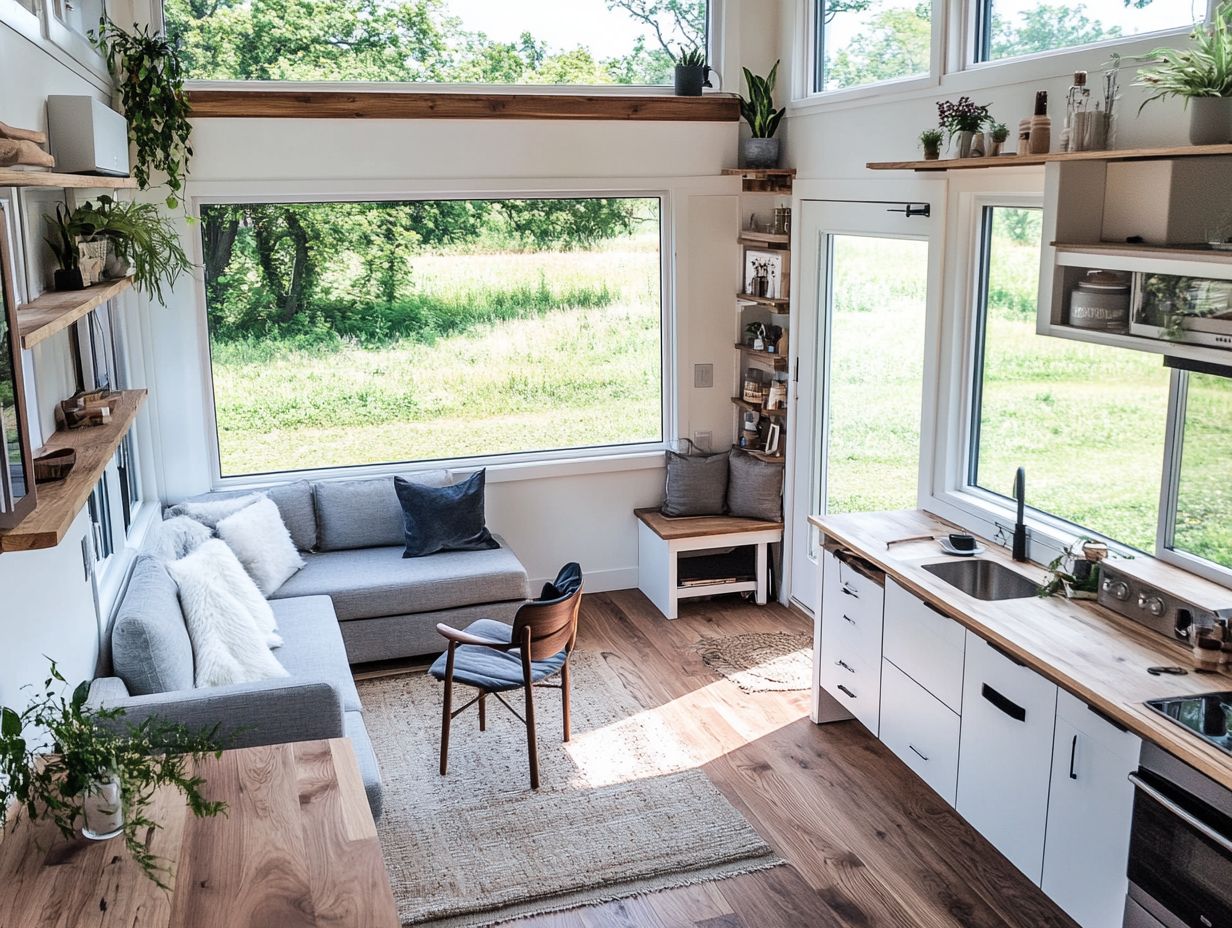
Utilizing outdoor space for living and storage is an important method in a tiny home. It allows you to extend your cozy micro living experience beyond the constraints of four walls. From outdoor kitchens to storage sheds, these spaces enhance functionality while fostering a deeper connection with nature.
Incorporating design elements like vertical gardens and compact furniture can transform your balconies and patios into vibrant living areas. This ensures you make the most of every inch. Imagine enjoying meals outside while a hanging storage solution keeps your gardening tools organized and prevents clutter in your main living space. Additionally, consider the importance of outdoor spaces in tiny house design to enhance your outdoor experience.
Choosing durable, weather-resistant materials is essential for keeping these outdoor areas inviting year-round. This encourages relaxation and sparks creativity. By skillfully blending form and function, you can create an outdoor sanctuary that complements your lifestyle and maximizes your limited square footage.
Frequently Asked Questions
What are some smart design solutions for tiny house living?
Some effective design solutions include using multipurpose furniture, maximizing vertical space, and incorporating storage in unexpected areas.
How can I make the most of a small kitchen in a tiny house?
To optimize a small kitchen, consider fold-down or pull-out countertops, compact appliances, and utilizing wall space for storage.
Are there ways to incorporate natural light into a tiny house design?
Yes, options include installing skylights, using large windows, and choosing light-colored paint and decor to reflect natural light.
What materials are best for tiny house flooring?
When selecting flooring, durability and space-saving are key. Suitable options include hardwood, vinyl planks, and cork flooring.
How can I create a comfortable sleeping space in a tiny house?
Create a comfortable sleeping area by using a Murphy bed, loft bed, or built-in storage bed. Invest in a high-quality mattress for better sleep and use space-saving bedding to maximize room.
Are there design solutions specifically for tiny house bathrooms?
Yes, effective solutions include using a composting toilet, incorporating a wet room design, and utilizing space-saving fixtures and storage.
Start transforming your outdoor space today!

